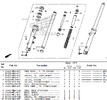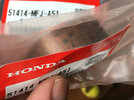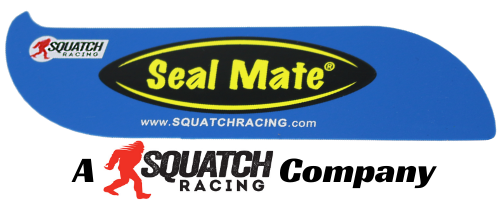DTMWAP
Active Member
Hello there, I have a leaking left fork seal so I want to replace both seals and fork oil on my 41000 km 2015 NC. I've looked at doing it myself but I think this job requires more of my limited mechanical skills. My experienced mechanic told me to pick up the parts and strongly suggest to replace also the fork bushings while the fork is teared apart. As I looked in the shop manual, and parts catalog, I see 2 bushings listed (items 7 and 8 in image below).
Which one is prone to wear? Should I buy both?

Which one is prone to wear? Should I buy both?






